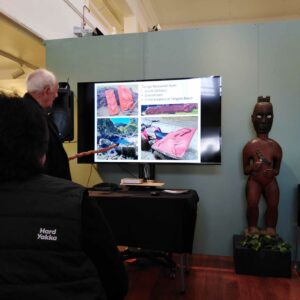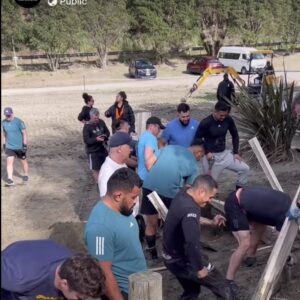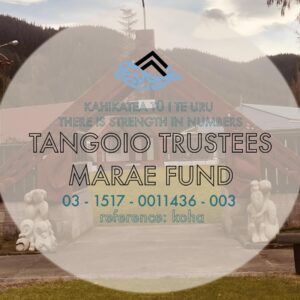Road Access
You are able to drive out, but there is a road checkpoint. It is run by locals who have volunteered to monitor the roads. Please be kind to them, they are just ensuring people are ok. Give them a wave and let them know you are going to Tangoio Marae. Drive carefully.
Parking
There is very little parking, and the roads aren’t as wide as they would normally be. Don’t park where trees are above you – don’t park on the left side of road. The hillside is unstable, we don’t want trees falling onto anyone.
Other Hazards
The Marae is unsafe and has been cordoned off. There is heavy machinery around and health risks. It is not safe for tamariki.
Please be mindful of the health risks
- the silt is contaminated with E.coli, giardia, toxins etc.
- protection must be worn: masks, glasses, rubber gloves, gumboots (preferably steel-capped boots), long sleeves
- there is no running water, but there are hygiene stations with hand sanitiser
- portaloos are at the back entrance of the Marae
- take a break when you are tired
For whānau helping there is, at Ross and Elaine Cook’s house
- some PPE – personal protection equipment
- hand wash and hand sanitiser stations
- a gazebo to rest in
- water to drink
- kai to eat
- please remember to wash your boots as you come in!
Remember whānau it is a work site so you need to follow health & safety guidelines
Below is some kōrero from our advisors:
Nathan Harrington , CEO, Te Kupenga Hauora (Ngāti Kahungunu)
Key messages
- This mahi is a marathon, not a sprint. Get rest. Look after your wellbeing, mentally and physically.
- Watch out for cuts, even small cuts can get badly infected from contamination.
- Wear eye protection to avoid dust carrying contamination into the eyes.
- Wear masks. Te Kupenga will provide masks.
Cam Wiley, Geotechnical Engineer, RDCL
Key messages:
- Plan mahi carefully.
- Safety is paramount.
- Water sitting on the ground around the Marae is contaminated (two wastewater tanks have spilled onto the Marae).
- There are dangers in the silt, the dust and the buildings – power lines, broken furniture and glass, possible asbestos, and debris from upstream.
- Floods and the resulting contaminated water and silt increase the risk of e-coli, giardia, conjunctivitis and infections that can make people sick.
- Kaimahi need to wear proper protective clothing (boots, longs, masks, eyewear, gloves).
- Safety procedures for the site need to be followed.




